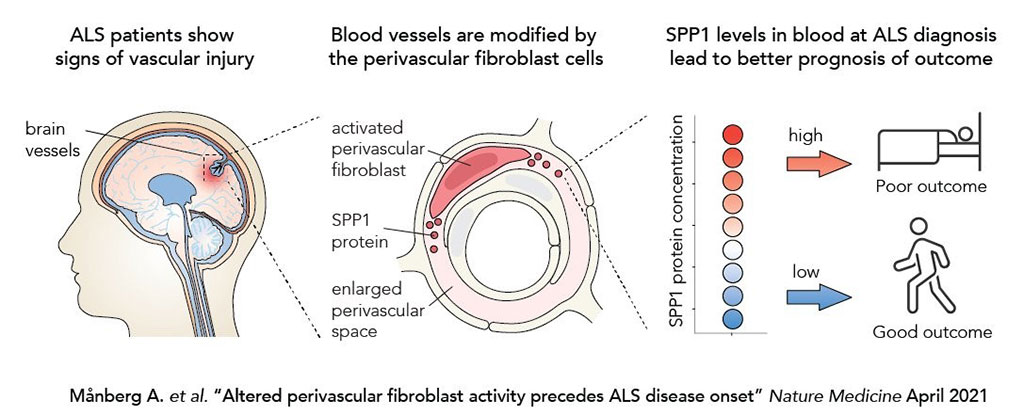Altered Perivascular Fibroblast Activity Precedes ALS Disease Onset
By LabMedica International staff writers
Posted on 28 Apr 2021
Amyotrophic lateral sclerosis (ALS) is a neurodegenerative disease of the motor neurons that eventually causes muscular atrophy, paralysis and death. There is currently no cure. The cause of ALS is only understood in the 5% to 10% of patients who have an inherited form of the disease.Posted on 28 Apr 2021
ALS patients demonstrate high variability of age at onset, non-motor symptoms and survival. In recent years, scientists have shifted focus from neurological explanations to these differences, and has taken an interest, for example, in the cerebral vascular system, which delivers oxygen and nutrients to brain tissue.

Image: Altered Perivascular Fibroblast Activity Precedes Amyotrophic Lateral Sclerosis Onset (Photo courtesy of Karolinska Institutet)
Scientists specializing in Affinity Proteomics at the Karolinska Institutet (Stockholm, Sweden) and their international colleagues used an expression-weighted cell-type enrichment method to infer cell activity in spinal cord samples from patients with sporadic ALS and mouse models of this disease. They examined the levels of a large number of potential marker proteins in the plasma of 574 patients with a recent ALS diagnosis and 504 healthy controls from four countries.
The team reported that patients with sporadic ALS present cell activity patterns consistent with two mouse models in which enrichments of vascular cell genes preceded microglial response. Notably, during the presymptomatic stage, perivascular fibroblast cells showed the strongest gene enrichments, and their marker proteins Secreted Phosphoprotein 1 (SPP1) and Collagen Type VI Alpha 1 Chain (COL6A1) accumulated in enlarged perivascular spaces in patients with sporadic ALS. Moreover, in plasma of 574 patients with ALS from four independent cohorts, increased levels of SPP1 at disease diagnosis repeatedly predicted shorter survival with stronger effect than the established risk factors of bulbar onset or neurofilament levels in cerebrospinal fluid.
Anna Månberg, PhD, the first author of the study, said, “It is exciting to see how the results from our protein profiling could be connected to the long range of cellular and molecular analysis that we have done and reveal the identified association to disease progression.”
The authors concluded that the activity of the recently discovered perivascular fibroblast can predict survival of patients with ALS and provide a new conceptual framework to re-evaluate definitions of ALS etiology. The study was published on April 15, 2021 in the journal Nature Medicine.
Related Links:
Karolinska Institutet














